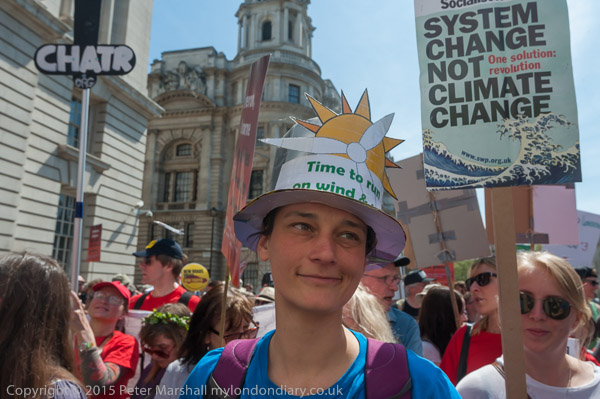
One of the skills that every photographer who covers protests has to master is walking backwards, or rather more importantly, taking photographs while walking backwards.
Back when I learnt photography – and when I taught it – there was a considerable emphasis on avoiding camera shake when taking pictures.
We learnt and taught to stand still, feet a foot or eighteen inches apart to make a solid platform (of course if you could lean against a post or wall, kneel or lie prone it was even better.) The camera should be held firmly in both hands, the left cradled under the lens, the right holding the body firmly with the first finger resting gently on the shutter release. Elbows should press in against the side of your chest, and it was vital to hold your breath and squeeze rather than jab at the button.
Of course, even this was only second-best, and ideally photographs should be made with the camera on a truly solid and weighty tripod. Of course in part this was a hangover from the days of large cameras and slow emulsions. Back in the 1890s when people started to make pictures without a tripod, exposures were often well under the 1/30th which makes hand-holding relatively easy with standard lenses.
I still sometimes see photographers trying to work this way – and some even at protests, but I’ve come to hate tripods (except for those few very special projects for which they are essential) and many, if not the majority of my pictures are taken while I’m walking, and often when I’m walking backwards, though sometimes I walk in the same direction as the people I”m photographing and twist around to work at an angle over my shoulder. It works for me better over the left than the right shoulder.
Walking backwards when taking pictures does need a little practice, but if you match your speed precisely and keep in step with those you are photographing you can get surprisingly sharp results at shutter speeds slow enough to give an attractive blurring to the background.
Though more normally I play safe by using ISOs that were unthinkable in the past. With both the D810 and D750 I’m now using there seems to be very little advantage in working below around ISO800, and results at much higher ISOs are still usable. In general I set the D750 with the wide-angle lens to ISO640, and the D810 with the 28-200mm at ISO800 and ISO auto allowing it to rise to ISO6400.
Nearly all the wide-angle pictures are sharp, and those with the longer lens usually suffer from focus problems rather than those caused by camera or subject movement.
One slightly limiting human design specification is the lack of eyes in the back of the head, and when walking backwards it is essential to take the occaisonal glimpse behing to check for curbs, lamposts and other obstacles. Falling over backwards is something of an occupational hazard, and could be dangerous, though the worst I’ve suffered has been the odd bruise.
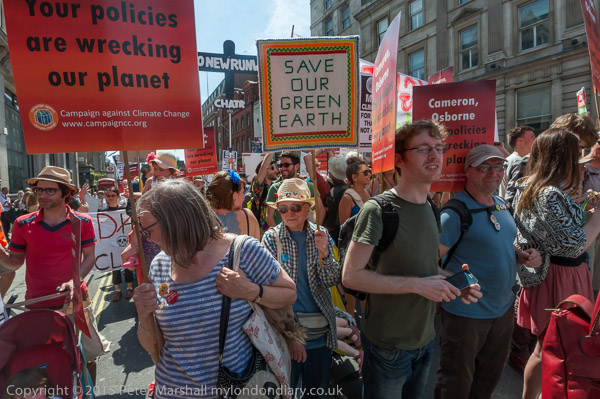
But the march I covered on the 8th May was a break from all this, as the marchers were marching backwards from Trafalgar Square down Whitehall, though in easy stages with several stops for speeches on the way. And they really weren’t very good at it, proceeding very slowly and cautiously.
This march in reverse gear was to highlight the governments back-tracking over clean energy, with insulation grants being dropped and clean energy programmes being crippled while they back technololgies such as fracking and burning biomass which contribute to climate change as well as proposing massively polluting and unnecessary road and runway projects.
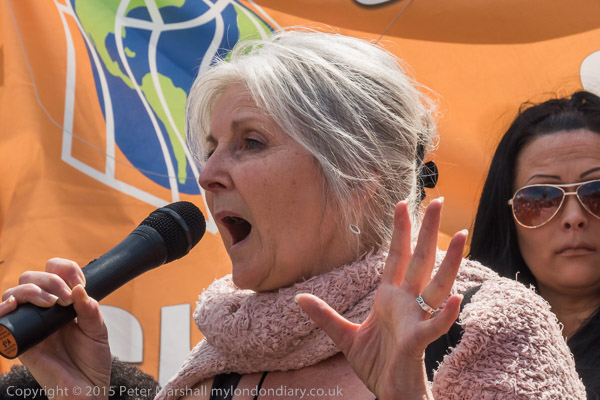
The event had started with some speeches including one from a woman whose house had been flooded. It brought back memories for me of watching the water come up to my own house a year or so earlier – though fortunately in our case it had stopped an inch or so short.
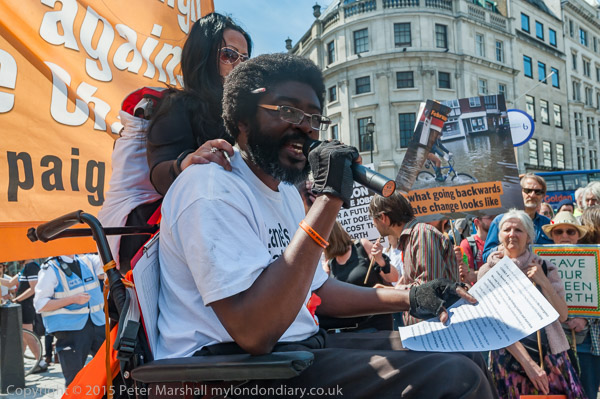
One of the others who spoke was Kye Gbangbola, whose son Zane had died in those same floods in February 2014 and had been left part paralysed. Despite a lengthy inquest since then it still seems not entirely proven that this was the effect of carbon monoxide rather than deadly hydrogen cyanide released by flooding from landfill.
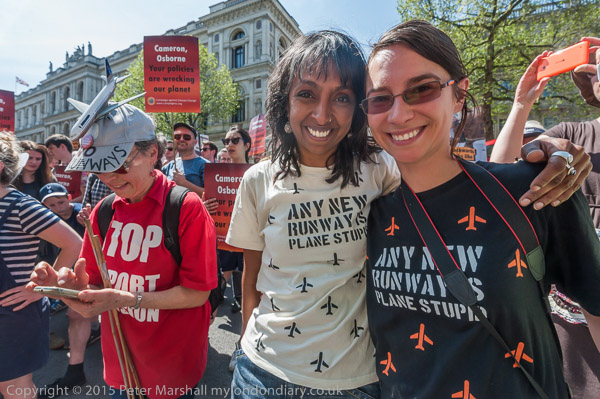
Later there were speeches from others as the march halted first at the Old War Office, where speakers included Dame Vivienne Westwood, and opposite Downing St, where Sheila Menon of Plane Stupid talked about the lack of any real need or public good of airport expansion and the catastrophic effect it would have on climate change, as well as the increased deaths through air pollution, and called for the huge subsidies that aviation enjoys to be removed.
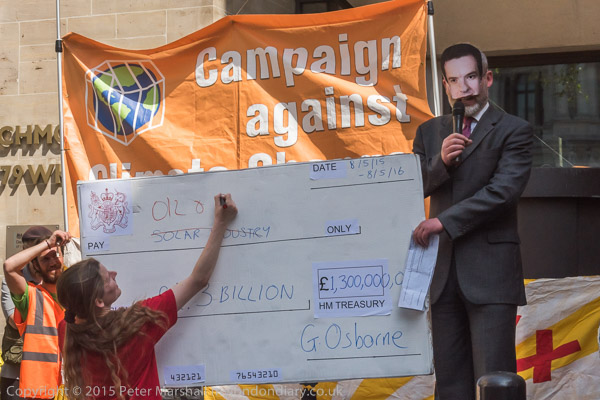
Finally outside the Dept of Health there were speechs and street theatre, which again looked at the huge subsidies the governemnt gives to the oil industry while at the same time it is cutting green initiatives. The protest had been intended to end in Parliament Square, but time had run out, probably because non-photographers are so slow at walking backwards.
More pictures at Going Backwards on Climate Change
______________________________________________________
There are no adverts on this site and it receives no sponsorship, and I like to keep it that way. But it does take a considerable amount of my time and thought, and if you enjoy reading it, a small donation – perhaps the cost of a beer – would be appreciated.
My London Diary : Buildings of London : River Lea/Lee Valley : London’s Industrial Heritage
All photographs on this and my other sites, unless otherwise stated, are taken by and copyright of Peter Marshall, and are available for reproduction or can be bought as prints.
To order prints or reproduce images
________________________________________________________